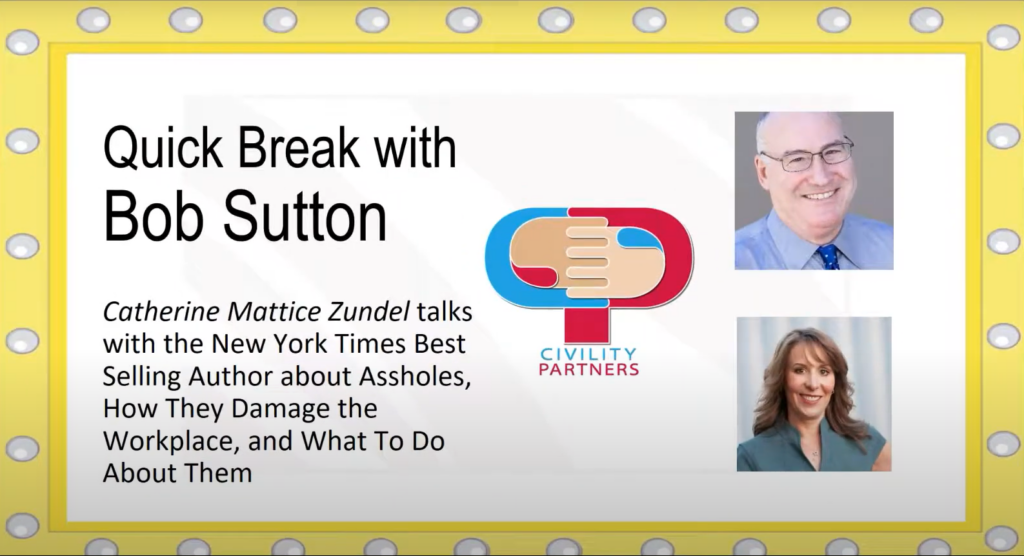I first reached out to Bob Sutton in 2009 when I asked him to write a testimonial for my first book, BACK OFF!
Bob and I recently had a conversation about whether workplace bullying is intentional, how leaders and HR can talk to “bullies” about their behavior, how to make culture change, and of course my recently released Workplace Culture Makeover Masterclass.
Bob is a professor at Stanford University, and his New York Times Best Sellers include Good Boss, Bad Boss; and The No A–hole Rule. He just released a follow up, The A–hole Survival Guide, which I assume will also be a best seller.
Click here to listen, or on the picture below.
Grab a cup of coffee and notepad, and enjoy the next 18 minutes! Bob is a pleasure to talk to and his sparkling personality sure shines through!
Is workplace bullying is intentional?
Yes, workplace bullying is often intentional. It involves repeated and deliberate actions or behavior intended to harm, intimidate, or control another person or group. Bullies typically aim to exert power over their targets through various means, such as verbal abuse, humiliation, sabotage, or manipulation.
This intentional behavior distinguishes bullying from unintentional conflicts or misunderstandings in the workplace.
How can leaders and HR can talk to “bullies”?
Approaching individuals exhibiting bullying behavior requires sensitivity and a strategic approach:
Direct Communication
Leaders and HR should have a private conversation with the individual, addressing specific incidents or patterns of behavior. They should use non-confrontational language, focus on facts, and express concern rather than accusation.
Establishing Impact
Emphasize the impact of their behavior, not just on the victim but also on team dynamics and the company culture. Help them understand the consequences and how it affects overall productivity and morale.
Clarify Expectations
Clearly outline the expected behavior. Sometimes, individuals may not realize their actions are perceived as bullying. Setting clear boundaries and expectations can help redirect their behavior.
Provide Support
Offer support or resources, such as counseling or conflict resolution training, to help the individual understand and modify their behavior. Sometimes, bullies themselves might need assistance in managing stress or interpersonal skills.
Follow-Up and Accountability
Regular check-ins can show that the company takes the issue seriously. This reinforces the importance of change and accountability. If there’s no improvement, more serious consequences might be necessary.
Policy Reinforcement
Ensure the company’s anti-bullying policies are well-known and reinforced. This reinforces the seriousness of the issue and provides a framework for managing such behaviors.
Document Discussions
Keep records of discussions and actions taken. This documentation can be crucial if further steps or interventions are needed, ensuring a structured approach to addressing the behavior.
By combining empathy, clear communication, and support with the reinforcement of company policies, leaders and HR can work towards addressing and rectifying bullying behavior in the workplace.
How to make culture change?



